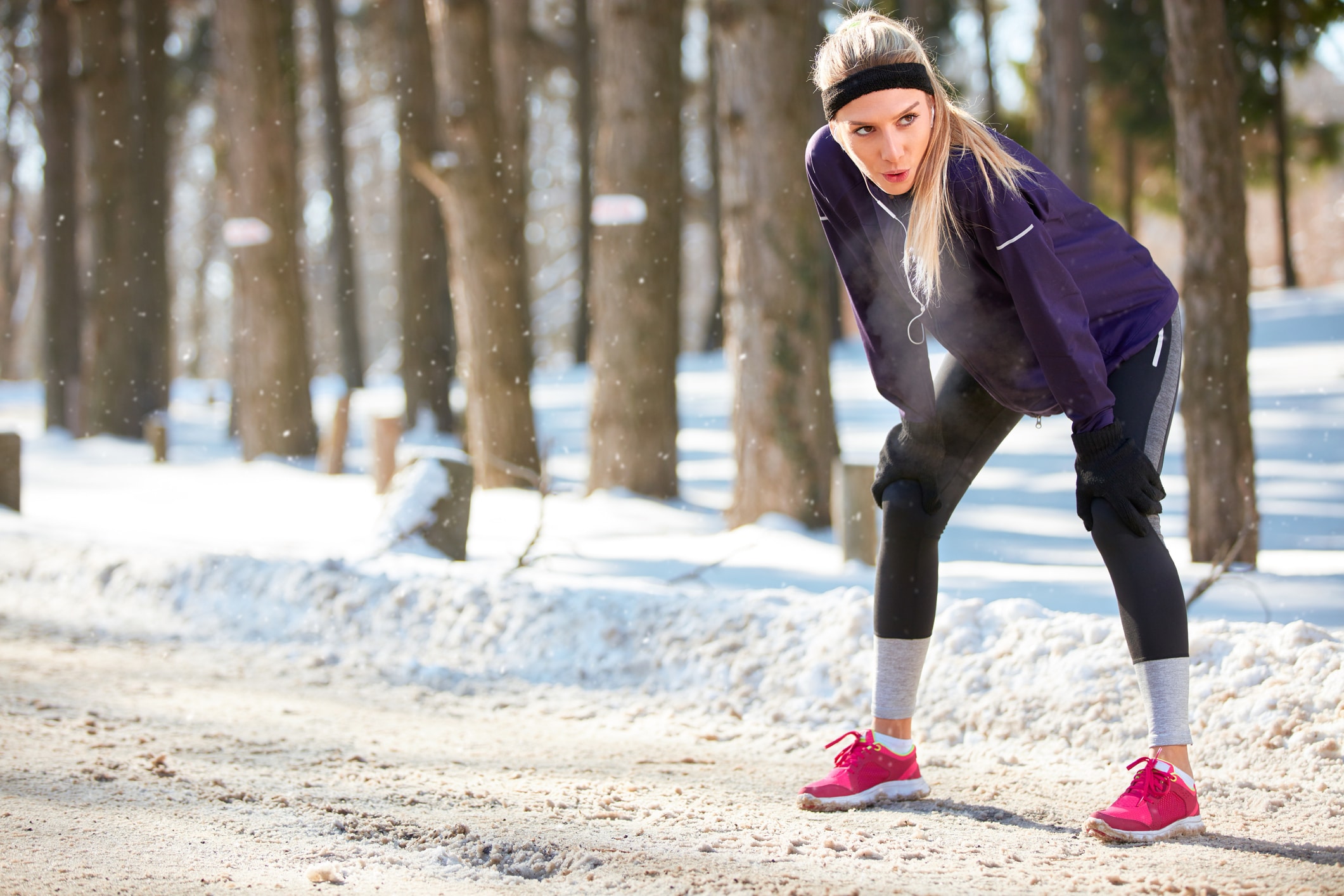Get ready to dig out your thermals and hot water bottle, as up to 20cm of snow could fall in parts of the UK today, with forecasters warning that temperatures will plummet to as low as -1C.
It’s great news if you love the snow, but not so great if you’ve got a marathon to train for, as walking in the snow can be a treacherous task – and running even more so.
If you’re keen to run outside in the winter but are worried about slipping and sliding on the snow and ice, there are still ways you can get outside and be safe.
Here are some tips for injury-free winter workouts.
1. Invest in a good pair of trail shoes for snow
Lack of traction on the snow and ice is one of the main worries with winter running, so a pair of trail shoes are a good investment for anyone who’s keen to get outdoors. As well as being more waterproof than regular trainers, they also have a claw-like tread that provides extra grip on uncertain ground.
Prices can vary from around £30 for a cheap pair to £150 for a top-of-the-range shoe, but if you do decide to splash the cash, it’s good to remember that you can still use them in the warmer months too. As well as helping in the snow, trail shoes offer durable soles that can handle rocks, sticks and other obstacles on muddy summer runs.
2. Load on the light layers
When it’s cold outside, the temptation is to throw on your warmest sweater for that early morning run. While it might feel great for the first few minutes, when you eventually start to sweat, that cotton hoodie will soak up the moisture and take ages to dry – which feels gross and can make you even colder.
The best way to dress is by putting together a layering system made up of light, technical materials that wick away sweat. Try a lightweight base layer, a long-sleeve running top, a running jacket that lets moisture escape and a pair of compression tights to keep legs warm.
You’ll probably want to add a pair of gloves and a running hat or headband too. Technical layers tend to be lightweight, so if you do get hot on your run, they can easily be rolled up and placed inside a running backpack.
3. Warm-up beforehand
When it’s freezing and dark, the last thing you want to do is prolong your workout by warming up beforehand – but the colder it is, the more important it is to do some dynamic stretches before hitting the road. When your muscles are cold, they’re less supple, so you need to warm them up to run more efficiently and avoid injury. It only takes five minutes, but could make all the difference in the long run.
4. Don’t try for a PB
If the conditions aren’t perfect outside, it goes without saying that you shouldn’t attempt a sprint. Take it at a slow and safe pace, and make sure you wear a head torch if it’s dark outside, as it can show up any dangerous lumps and bumps in the road ahead.
5. Don’t run if it’s icy or slippy outside
If the outside of your house resembles an ice rink, there’s a good chance you might slip and fall, so it’s simply not worth it. Sit it out for a few days until the slippy patches thaw out – a few extra days rest won’t derail your training plan completely.
6. Take your workouts indoors
If you’re adamant about working out, the easiest way to ensure you’ll stay injury-free on the ice and snow is to avoid it altogether. Sign up to a gym and hit the treadmill instead of the trails. It’s a bit more expensive than outdoor running, but if you don’t own the right winter gear already, it could actually save you money in the long run.
If you don’t want to take out a 12-month gym membership, check with your local gym, as some offer one-month trials or shorter contracts.
There are also now contractless-free apps and websites, like MoveGB (nationwide) and Classpass (London, Manchester, Bristol) that allow you to pay for one month of gym hopping, without taking out a full 12-month contract.
That way, you can temporarily take your workout indoors and then get back to pounding the pavements once the bad weather has cleared up.
